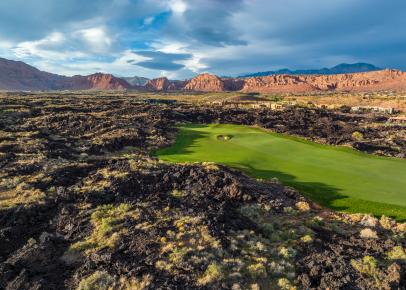Courses
It's time for these 13 amazing courses to step up and host a big-time event
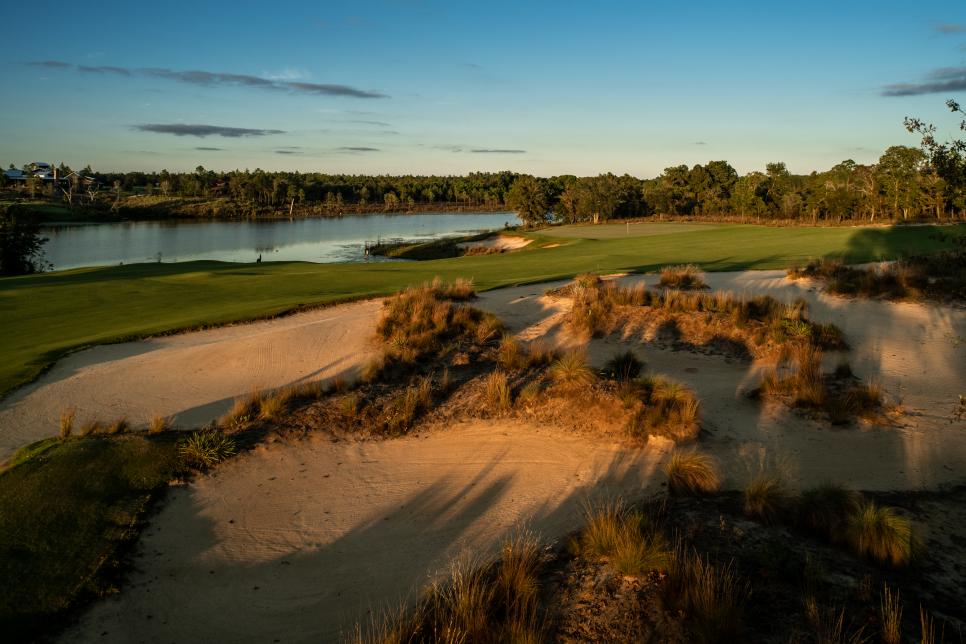
It’s a conversation best had with fellow course nerds. How cool would it be if an epic venue like National Golf Links of America or Fishers Island Club could somehow host a big-time event? What would need to be done to preserve the older architecture—a reduced-distance ball? Persimmon clubs?
With the news that Pine Valley will host the 2034 Curtis Cup, our minds started to wander—dreaming about which of our nation's greatest courses should step up and host elite competitions. Layouts like Cypress Point are perfect venues for events like the Walker Cup, which it will host in 2025, and with that in mind, we’ve assigned possible events to iconic layouts below.
Cypress Point Golf Club
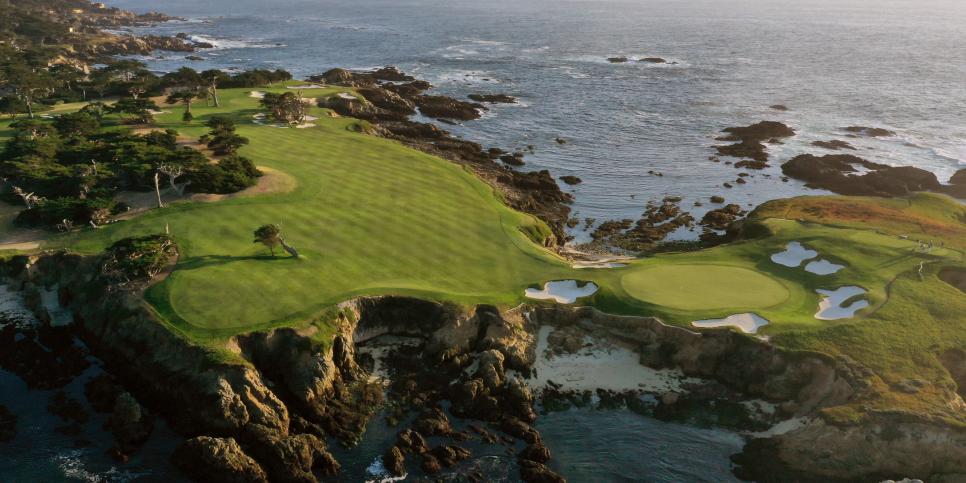
Carlos Amoedo
The 2025 Walker Cup on the unparalleled cliffs of the Pacific will be phenomenal. That’ll only tickle our fancy for more competition at Cypress Point. Perhaps a U.S. Women’s Amateur would be the proper kind of event for the Alister Mackenzie gem. A U.S. Women’s Open would be cool but likely mandate too much space for hospitality and grandstands. A Women’s Amateur might be the perfect way to further showcase one of the world's most special courses.
From Golf Digest Architecture Editor emeritus Ron Whitten:
Cypress Point, the sublime Monterey Peninsula work of sandbox sculpture, whittled Cypress and chiseled coastline, has become Exhibit A in the argument that classic architecture has been rendered ineffectual by modern technology.
I'm not buying that argument. Those who think teeny old Cypress Point is defenseless miss the point of Alister MacKenzie’s marvelous design.
MacKenzie relished the idea that Cypress Point would offer all sorts of ways to play every hole. That philosophy still thrives, particularly in the past decade, after the faithful restoration of MacKenzie’s original bunkers by veteran course superintendent Jeff Markow.
Explore our complete review here—including bonus photography and ratings from our expert panelists.
Watch our exclusive drone tour of Cypress Point
Fishers Island Club
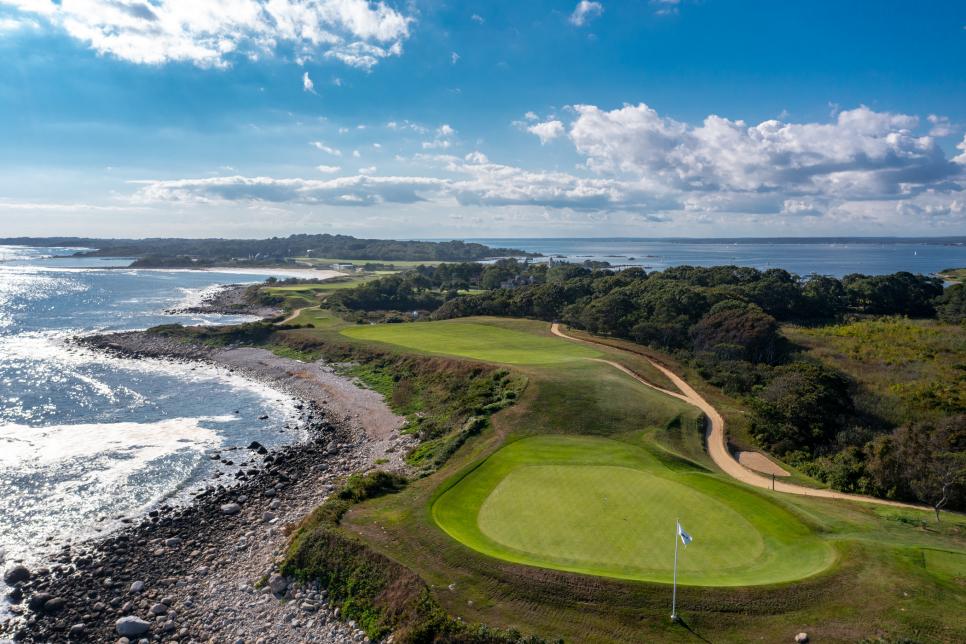
LC Lambrecht
Just like Cypress, logistically, hosting a big-time event at Fishers Island would be nearly impossible—there’s only so much housing on the island—and most of it is owned by the 1 percent of the 1 percent. But if the footprint of a Walker Cup is such that the USGA and R&A is bringing it to Cypress, perhaps it can come to Fishers Island, too. It’s essentially the same yardage and also boasts some of the country’s best Golden Age architecture. One of the best tickets in golf would be standing behind the fourth green at Fishers Island (above) and watching the world’s best amateurs try to figure out the menacing punchbowl putting surface.
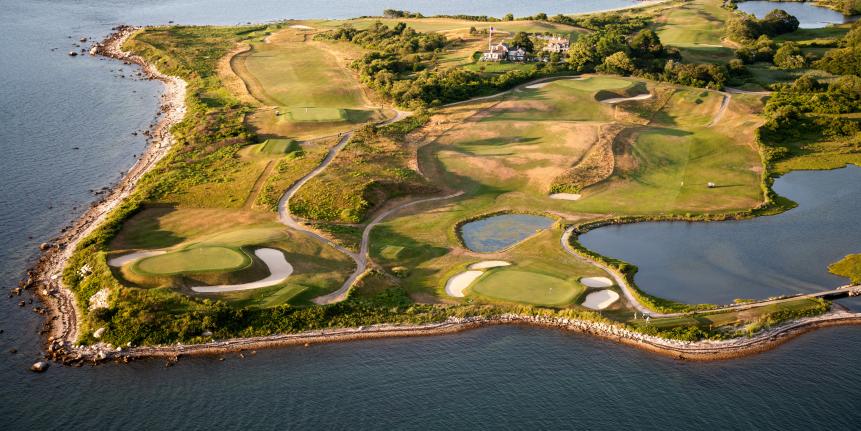
Sand Hills Golf Club

Dom Furore
It would be fascinating to see the world’s top-ranked modern design host the best players in the world. Once again, it would logistically be seemingly tough to host a big-time event in the middle of the sand hills of Nebraska, a Walker Cup would be a great first-go for the Coore and Crenshaw gem.
Watch our exclusive drone tour of Sand Hills
Ohoopee Match Club

Dom Furore
Gil Hanse and Jim Wagner created this course for the purpose of match play. Now the PGA Tour is looking for a host to its match-play event. We know Cobbtown, Ga., is in the middle of nowhere, but so is Congaree, and the tour figured out the logistics to hosting an event there.
From Golf Digest Architecture Editor emeritus Ron Whitten:
I’ve been told Gil Hanse had first examined the site of Ohoopee Match Club as far back as 2006 considered it ideal for golf: gently rolling terrain with no severe elevation changes, and beautiful sandy soil deposited by the nearby Ohoopee River, perfect for drainage and firm, fast conditions.
The ground around tiny Cobbtown, Ga., is also perfect for growing onions—it’s just northeast of Vidalia, world-famous for the Vidalia onion. Indeed, Ohoopee’s logo is a freshly picked onion, although if you look closely, its roots are three writhing snakes.
Any symbolism pertaining to match play is uncertain; perhaps it simply suggests the sort of putts one will face. What’s the composition of a course meant for match play? One might think it would contain lots of penal hazards, because a triple bogey on any particular hole would not be fatal in match play.
Perhaps the targets would be smaller than normal, to level the playing field between big hitters and short-but-accurate golfers. That’s not the composition of the 7,325-yard championship course at Ohoopee. Hanse did produce dramatic visuals in this sandy locale that hark back to portions of Pinehurst and Pine Valley, from long expanses of sandy rough dotted with native plants to deep, foreboding pits of sand, but they’re mostly on the far perimeter of holes.
Explore our complete review here—including bonus photography and ratings from our expert panelists.
Pikewood National
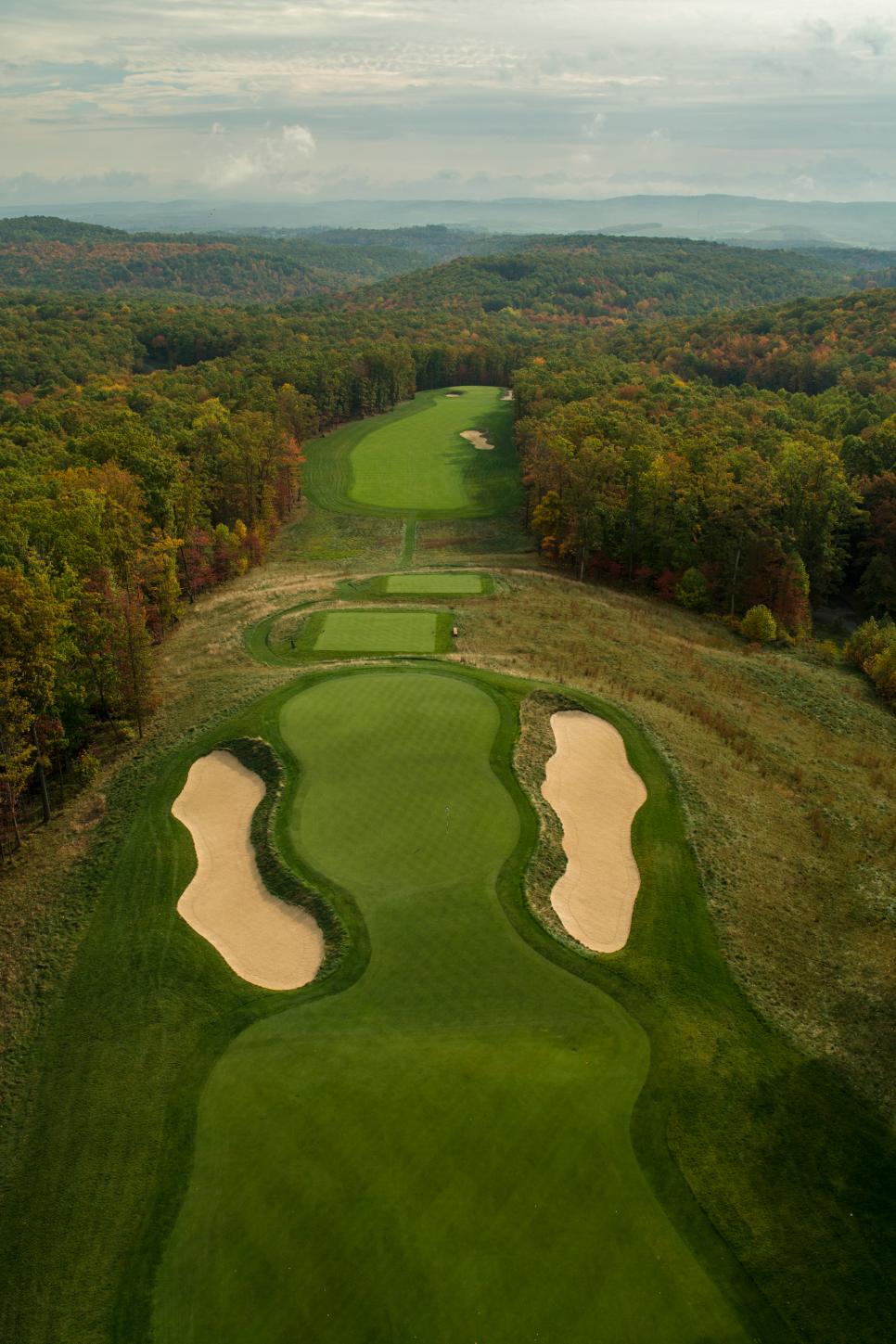
Joann Dost
Since its debut on our national rankings 10 years ago, the West Virginia design has improved its rank on every edition of our of America’s 100 Greatest list. At nearly 7,700 yards with many elevation changes and difficult walks, this would be a tremendous venue to test the world’s best amateurs at a U.S. Amateur. The USGA would just need to figure out a second venue to co-host for the first few days. Pete Dye Golf Club in Bridgeport, W.V., is also in Golf Digest’s top 50, but a 45-minute drive.
Royal County Down
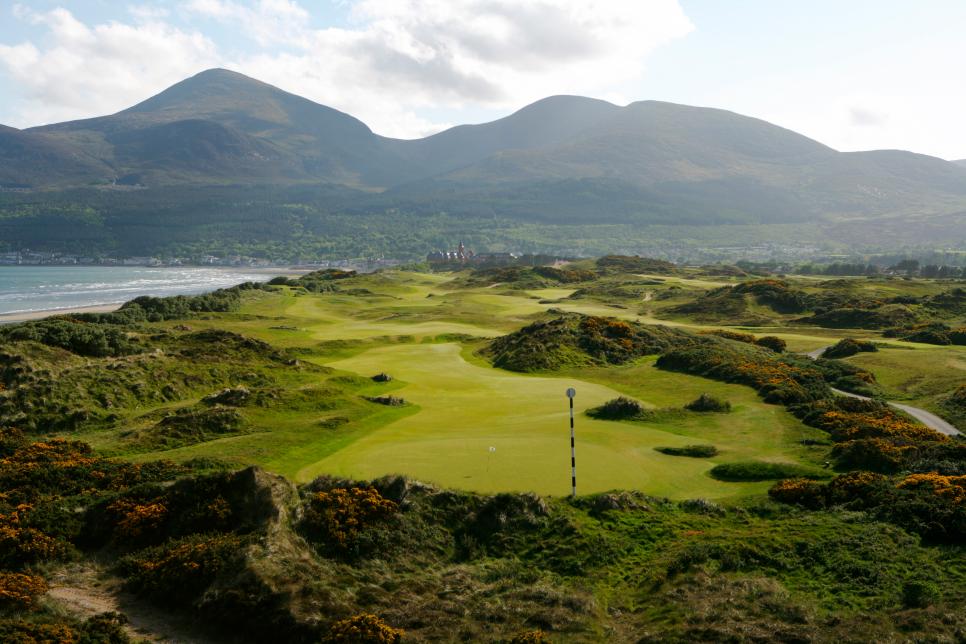
Getty Images
We know that the Amateur (aka the British Amateur) is normally hosted in the United Kingdom. But it was hosted at Portmarnock in 2019, so why not bring the competition to Northern Ireland, allowing the world’s No. 1 course to shine on a worldwide spotlight.
Turnberry

David Cannon
We recognize that the R&A has made a decision not to bring The Open Championship back to Turnberry with its infamous owner at the helm. But we’re talking about one of the best seaside layouts in the world, which has only gotten better after renovations over the past 10 years. Even if it’s not back in the Open rota, we’d love to see a Walker Cup or British Amateur come here to start to mend the connection.
Friar’s Head Golf Club
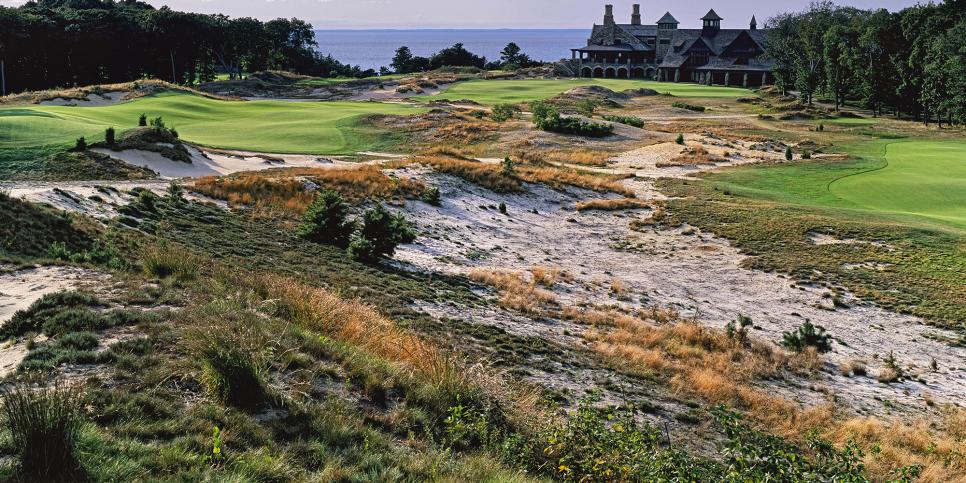
Just like Sand Hills, Friar’s Head is on the Mount Rushmore of great modern courses and deserves to be shared with the masses. The incredible routing by Coore and Crenshaw is one of the country’s most private courses, but owner Ken Bakst is a former U.S. Mid-Amateur champion, so we think bringing a Mid-Am to his course would be absolutely fitting. It’s already been a great host to several Met Amateur events.
Prairie Dunes Country Club

Too short at less than 7,000 yards, Prairie Dunes couldn’t host a U.S. Amateur, but it would be tremendous if the USGA brought a Walker Cup or a similar event to the Perry and Press Maxwell-designed layout in Hutchinson, Kan. The club has previously hosted a U.S. Women's Open.
Chicago Golf Club

Andy Johnson/The Fried Egg
The USGA often likes to test out future U.S. Open sites with other championships it oversees. This was the case with new courses like Chambers Bay and Erin Hills, as well as a renovated The Country Club in Brookline, which each hosted U.S. Amateurs several years before their Opens. It was also the case with this year’s host, Los Angeles Country Club, where the North Course received a first look during the 2017 Walker Cup. The U.S. Women's Open will be played at the usually spotlight-averse Chicago Golf Club in 2033 (the club also played host to the 2005 Walker Cup), breaking the ice for this venerated C.B. Macdonald/Seth Raynor design. The course is too short for the contemporary professional game, but if the USGA continues exploring ways to limit or roll back distance increases, Chicago would be a wildly popular option. Getting back into the Chicago market would seem to be a no-brainer.
Interlachen Country Club

Peter Wong/Courtesy of Interlachen CC
USGA chief champions officer John Bodenhamer told Golf Digest earlier this year that the organization wanted to take the Men’s and Women’s Opens to “cathedrals of the game.” That probably doesn’t bode well for a return to Chambers Bay, Erin Hills or even Torrey Pines, but it might boost the chances of a historic course like Interlachen near Minneapolis where Bobby Jones won the 1930 U.S. Open in his Grand Slam year. The America’s 100 Greatest Courses stalwart is currently undergoing a remodel by Andrew Green, who proved during last May’s PGA Championship at Oak Hill that his work restoring Donald Ross holes can produce exciting major championship golf. It would also get the tournament back into the upper Midwest, where the USGA currently has no other Men’s Opens planned until 2051.
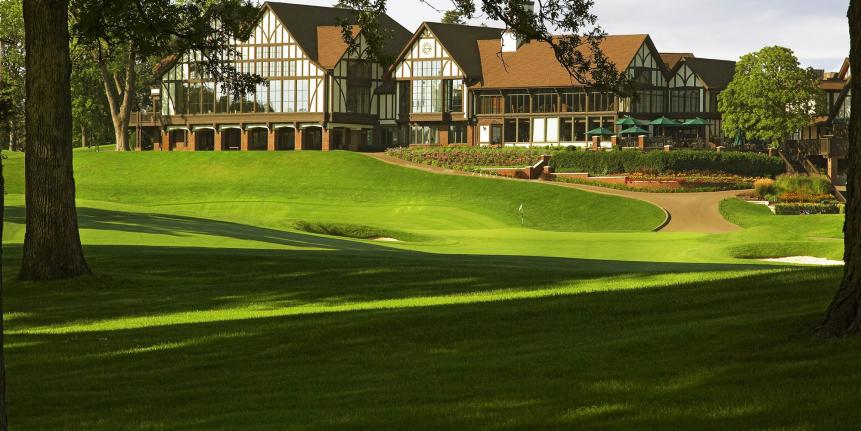
Butler National Golf Club

LC Lambrecht
When the Western Open was played at Butler National between 1974 and 1990, it was annually considered one of the toughest venues on the PGA Tour (the winning score was over par two of the first three years). The George Fazio design requires extreme strength and precision, demanding players shape drives and strike accurate approaches that must avoid rough, creeks, lakes and swarms of deep bunkers on each hole. Though nearly 50 years old, Butler National’s architecture is far from obsolete to the modern game, stretching out over 7,500 yards with a course rating of 78.1. The club’s current all-male membership policy would likely prohibit a visit from the USGA, but if that changed, and if the U.S. Amateur is about identifying the country’s greatest amateur players, few courses are better suited to the task than Butler National.

Sweetens Cove
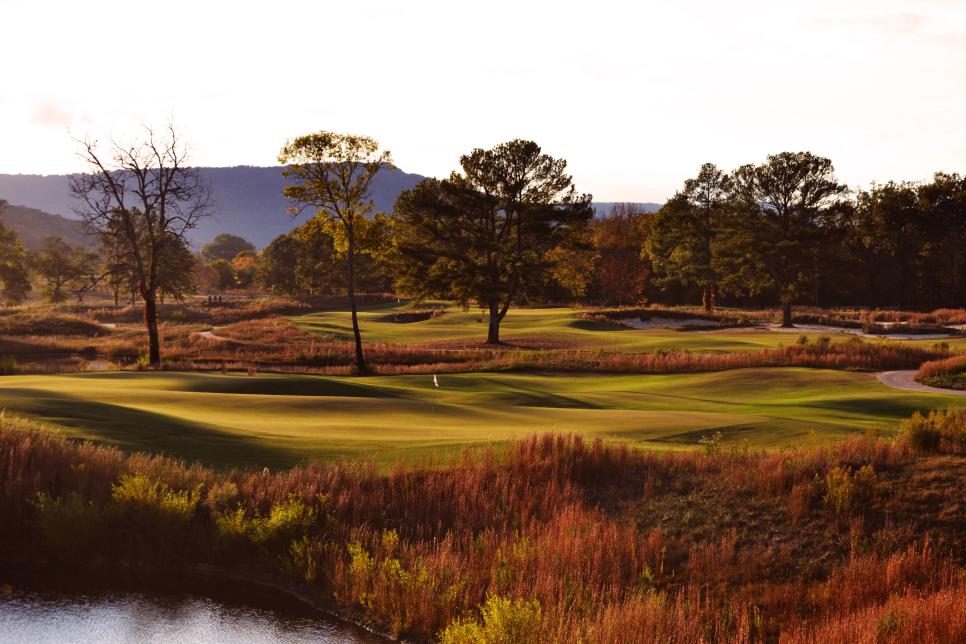
Photo by Rob Collins
One of the not-so-secret criticisms of team events like the Ryder, Walker and Curtis Cups is that they are awful for spectators. When the action comes through a particular hole it can get raucous, but with only four or five groups on the course at a time those moments are few and far between. What about contending a Curtis Cup on a nine-hole course like Sweetens Cove where the holes are all in close proximity? Spectators would get near constant viewing, and the course’s unique design with extravagantly wild, elevated and elongated putting surfaces allows holes to play differently when the pins are moved around after the matches pass through. After all, par and yardage don’t matter during match play, so neither should going around the holes twice. Sweetens Cove’s eagle-or-double-bogey architecture would have matches swinging this way and that.
• • •
Explore Golf Digest's recently relaunched Places to Play community, where you can add star ratings and reviews for all the courses you play. We've collected tens of thousands of reviews from our course-ranking panelists to deliver a premium experience, which includes experts' opinions, bonus course photography and videos, plus much more. Check it out here!


